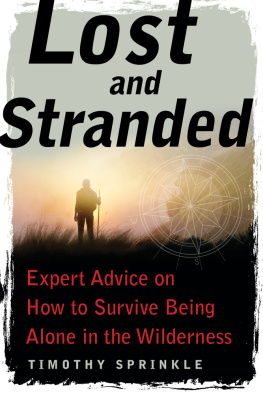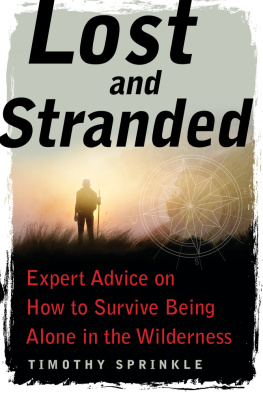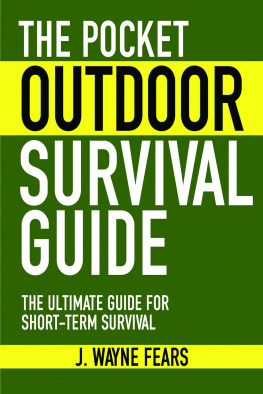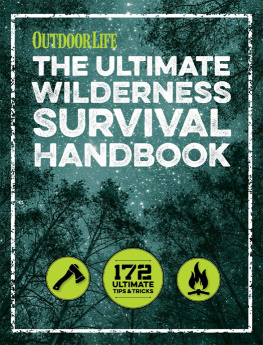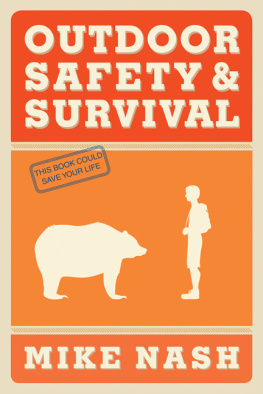Copyright 2017 by Timothy Sprinkle
All rights reserved. No part of this book may be reproduced in any manner without the express written consent of the publisher, except in the case of brief excerpts in critical reviews or articles. All inquiries should be addressed to Skyhorse Publishing, 307 West 36th Street, 11th Floor, New York, NY 10018.
Skyhorse Publishing books may be purchased in bulk at special discounts for sales promotion, corporate gifts, fund-raising, or educational purposes. Special editions can also be created to specifications. For details, contact the Special Sales Department, Skyhorse Publishing, 307 West 36th Street, 11th Floor, New York, NY 10018 or .
Skyhorse and Skyhorse Publishing are registered trademarks of Skyhorse Publishing, Inc., a Delaware corporation.
Visit our website at www.skyhorsepublishing.com.
10 9 8 7 6 5 4 3 2 1
Library of Congress Cataloging-in-Publication Data is available on file.
Cover design by Tom Lau
Cover photos courtesy of iStockphoto
All interior photos courtesy of iStockphoto
Print ISBN: 978-1-5107-2770-0
Ebook ISBN: 978-1-5107-2772-4
Printed in the United States of America
For anyone who has ever wanted to go exploring, but was worried that they wouldnt come back.
CONTENTS
Introduction
K NOW THIS FIRST: T HIS PLACE is beautiful.
Were in a stand of 300-year-old hemlock, some of the oldest trees on the eastern seaboard, and the light mist thats gathered around us deflects the light, softening it, as if were in a cloud forest.
The woods in this part of Virginia are heavy, thick in ways that you dont often see in the mid-Atlantic. Hemlock trees are tall, evergreens that can reach up to 200 feet, and here theyre nearly that tall. High overhead, it looks as if the branches are leaning in on us. On the ground, pine needles are everywhere. It smells like Christmas.
But I dont care.
Im focused entirely on the one fallen hemlock tree that Im straddling, crawling spread-eagle across what can only be described as a torrent of whitewater at least twenty feet below me. A light rain falls, has been falling all night, giving everything I touchparticularly the moss that covers this loga damp, slippery feeling that prevents my fleece gloves from getting any sort of grip.
I pull off the gloves and stuff them in a pocket, hoping that my bare hands will fare better.
No luck.
Im able to make slow progress by scooting with my legs, pushing my body forward across the smooth parts of the log as my legs dangle on either side, my arms wrapped around it in a desperate bear hug. In spots where branches once grew and broken shards remain, I have to shift my weight and lift myself to crawl over them. It is terrifying. The rain picks up slightly as I dismount from the log and scramble on all fours up the other bank, sticky Virginia mud on my knees and hands.
Never before have I felt so tested in the outdoors or relied so much on my gear.
And were far from done. High water in the canyon has left the trail littered with debris and fallen trees, forcing us to crisscross the water repeatedly, often on slippery, moss-covered logs such as the hemlock above, and often over dangerously high water. Where fallen trees are not available, we cross by jumping from rock to rock in the creek itself, taking care not to slip into the water on a sprained ankle or worse.
Were backtracking, making up for a misjudgment earlier in the day that took us off course on our fifteen-mile out-and-back hike that was to take us up Ramseys Draft creek and over its 4,000-foot peak, Big Bald Knob. We had camped the previous night some ten miles up the creek itself, on a ridge overlooking the Blue Ridge Mountains to the west of the Shenandoah Valley, with plans to follow the ridge back down to the south to complete the circuit.
Ramseys Draftand a rapidly approaching thunderstorm rolling in from the westhad other plans.
* * *
Ramseys Draft is a wilderness area in central Virginias Augusta County, near the border with West Virginia, thats part of both the George Washington and Jefferson National Forests. It is rugged, wooded open space, about as wild as youre going to get within three hours of Washington, DC.
Its also well-known as a challengingand sometimes dangerousplace to hike.
Writing in Backpacker magazine in 1997, Mary Burnham said of Ramseys Draft that few hikes Ive taken were tougher, going on to explain whythe unmarked trail, slippery stones, steep climbs, and the ever-present risk of water along the trail. Theres either too much or not enough, she wrote, describing the main trail as soggy due to the endless creek crossings and mentioning that the most-used campsites in the area are prone to flash flooding. On the flipside, once you leave the creek bed area, there is no water available at all along the trail until you reach the mountain pond at the White Oak Trail junction, more than six miles from the trailhead.
All of her points are true. The trails in this area really arent marked, and there are miles of poison ivy and stinging nettles along the creek, along with hundreds of downed trees like the one I ended up crawling across, up along the ridge. The climbs are steep, the miles are long, and the vistas are few and far between (but more than worth it when they appear). When weather rolls in, which happens a lot here in the mountains, flash flooding and lightning strikes are both significant threats.
Ramseys Draft is rugged, challenging, and scenic.
In the South, a draft is another word for a creek, and Ramseys Draft is no exception. The waterway here, also named Ramseys Draft, is a tributary of the Calfpasture River, which leads to the James River through Central Virginia on its way to the Chesapeake Bay. Its a fast stream, typical for the area, barreling down from deep within the mountains above, creating a wet, muddy approach to the hike that lasts for miles.
Our hike has taken us directly up the creek into a drainage thats bordered on both sides with steep ridges that top out above 3,000 feet. From the trailhead, at U.S. 250, it looks like a deep, V-shaped valley that starts out wide and comes together in a point a few miles in. From there, the trail turns up, tracing along the hillside as the ridge leads further and further into the wilderness. The climb is steep at times, though no worse than similar trails in this part of Virginia, and the forest is a welcome break from the waters edge earlier in the hike, where heavy foliage and tall stinging plants make for a tiresome few hours of work.
It is certainly worth the effort. The George Washington and Jefferson National Forests, encompassing more than 230,000 acres between them, are home to the last few remaining old growth forest stands in Virginia and some of the last in the East. This part of the country has been logged heavily dating back to the colonial days, so finding any sort of old growthwhich is defined loosely as a forest that lacks any sort of human development (such as roads), has trees that are 150 years old or older, lots of decaying wood from fallen trees, and a mixed-aged canopylocally is a treat, usually the result of either steep slopes, early protection, or a lack of commercial viability.
Ramseys Draft has the first one covered: steep slopes.
Given the limited accessand if our hike had proven anything, it was that access to this area was and is very limitedit would be nearly impossible for loggers to get to the old-growth forest to cut it down or truck the trees out for processing once they had been felled. That often prevents it from being commercially viable as well, because timber that you cant get out, even if you can get in to cut it down, is no good to the market. The timber industry lives and dies by forest roads, access lines to remote parts of the deep woods that allow for the speedy removal of timber thats been felled by loggers, taking it out to processing plants and, eventually, the open market for sale. Steep-sloped forests are also usually dry, because they drain off quickly and cant hold much water, limiting tree growth in the first place and further limiting economic viability. Limited access like that around Ramseys Draft not only prevents timber activity in the first place but means the stands in the area are not going to be commercially viable either.

